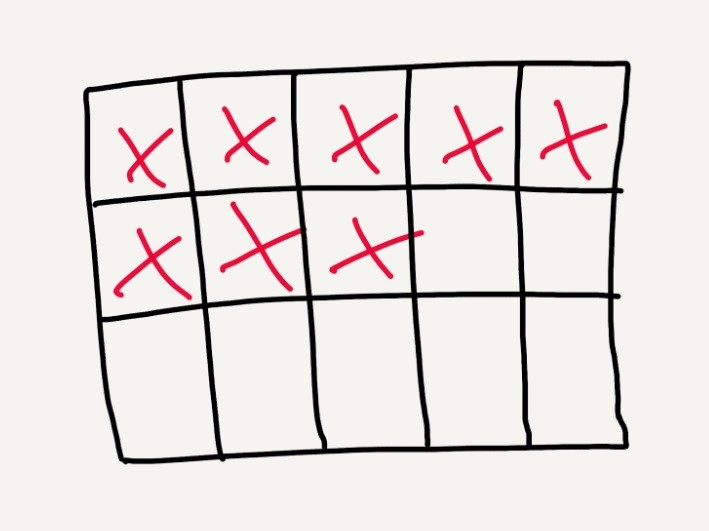Since his book, Drive, I’ve really enjoyed Dan Pink’s work.
2019 was a fun year at BLBS. We read Pink’s When in my leadership community for school admin and I asked him to be on my podcast.
Dan said “Yes” and you can listen to the full episode we created on this page.
Below are 5 big ideas that I learned from Pink’s book on timing.
Mornings Matter
I love writing in the morning. It is quiet outside and also within my mind. I produce my best work before 2pm each day.
That doesn’t mean I’m useless in the afternoon, but I find it harder to focus and feel more scatter-brained.
Turns out I’m not alone in performing better in the morning. Whether it is CEOs performing better or students from Los Angeles to Denmark scoring higher on tests, many people perform better in the morning.
Morning types are called “larks.” Those that enjoy late-nights are “owls.” If you’re not a lark or owl, consider yourself a “third bird.”
A few interesting points I didn’t expect:
- Fall/winter births are mostly larks
- Spring/summer births are mostly owls
- Young kids are mostly larks and teens owls.
- After age 20 people become more larks.
- Men are more owls than women.
YOUR IDEAL WEEK SUBSCRIBE
Get your free ideal week course
What matters most is knowing how you perform best. Pink suggests tracking what you’re doing throughout the day (every 90 minutes after waking) and noting how you feel in terms of mental awareness and physical energy.
With this data, you should then protect your time for when you make the best decisions and are the most productive.
This is an important point because many leaders make this huge mistake: Yes, being a leader means you serve, but that doesn’t mean you save all your work for when people go home.
One way leaders serve their organization is by doing only what they can do and doing those tasks at a high level.
The smallest step toward this for you might be to block off a 90 minute “deep work” session for when you are most alert. Do this once a week and see how much more you get done.
(If you are enjoying this post on Dan Pink’s When, then you’d love this post on time blocking)
YOUR IDEAL WEEK SUBSCRIBE
Get your free ideal week course
Take a Break — You Deserve It!
Another mistake I see leaders make is that they see breaks as a sign of weakness.
Leaders don’t have to be first to work and last to leave.
Leaders don’t need to be active every second of the day.
Whether it is a nap (which Dan Pink recommends), taking a brisk walk outside, or spending 10 minutes to meditate, breaks are essential for top performance.
Many leaders I coach have a nasty habit of running from meeting to meeting … to observation … to parent conference … to (you get the picture).
Often I hear that they skip lunch each day too. What is that all about?
You are not a robot nor are you superman. Human beings need fuel and rest to perform their best.
Get over your ego. Stop being a martyr and give yourself permission to take a break throughout the day.
Yes, eat lunch. A shake you inhale on your way to the next meeting doesn’t count.
Doctors make more mistakes in the afternoons. Students perform worse on afternoon tests versus tests taken in the morning. Judges assign harsher consequences in the afternoon.
Here are Dan Pink’s recommends on what breaks should look like:
- Something beats nothing
- Moving beats stationary
- Social > Solo
- Outside > Inside
- Fully detached > Partly detached

NYE and Turning 40
There are moments in our lives that seem to have more gravity than others. These moments are called temporal landmarks. They stand out from other days and help us make a fresh start. Temporal landmarks also help us slow down our thinking (here is an excellent book on thinking by Daniel Kahneman).
We know this to be true because every year many of us make New Year’s resolutions and begin new positive habits in our lives. People whose age ends in a 9 (29, 39, 49, etc.) represent 48% of all marathoners.
But NYE and turning 40 doesn’t happen every day. How can we leverage the power found during these temporal landmarks?
Make it a game!
Reframe other days.
Every month has a first Monday, Tuesday, Wednesday …
New financial quarters start every 3 months and academic quarters start every 8 – 12 weeks.
The Power of Moments taught us that we can really make any day special.
What if we celebrated the 37th day of school?
Why should we? Who cares!
Better question: Why shouldn’t we celebrate the 37th day and how special could we make that day?
We can also celebrate:
- The first day of spring
- An educator that teaches her 1000th student
- Anything you want!
It’s all invented, really. Have fun. Dream big and transform mundane days to motivating.
YOUR IDEAL WEEK SUBSCRIBE
Get your free ideal week course
Don’t Break the Chain
Wedding and funerals are both memorable. They represent beginnings and endings.
Although middles are less remarkable, that doesn’t have to be the case.
Each midpoint offers us a choice: we can either slump or spark.
Whether it’s midlife or midway through a project we can prepare for the slump or spark that awaits.
There are a few ways we can avoid slumps altogether by intentionally designing the conditions that will unleash a spark.
Here’s how …
Don’t break the chain.
Seinfeld shared that his secret to comedic success is that he writes jokes every single day. Every day that he writes a joke, he puts a big red “X” on the calendar. Over time there is a chain of Xs each month representing the days that he put in the work.
It’s easy to slump during a midpoint. Don’t break the chain.

Dan Pink calls this “punctuated equilibrium.”
During any project, there will be a realization that half the time is now gone.
By bringing this to the forefront of everyone’s recognition, teams will rally and focus more on achieving the goal. Keep your staff focused on the fact that time is a finite resource and you need to buckle down.
Trail at the half
I’m not a betting man, but if I was, I would start betting on close underdogs.
Basketball teams that were trailing slightly coming out of halftime actually had a higher percentage to win. That’s because they had to not only match the opponent’s score … they also had to overtake them to win. This makes the team hungry and turns the midpoint into a spark instead of a slump.
A few other midpoint helpful tips:
- Set midpoint goals to breakdown large projects
- Publicly commit to goals
- Picture the people your work helps
YOUR IDEAL WEEK SUBSCRIBE
Get your free ideal week course
The End
I’ve run a handful of marathons and have competed in all sorts of athletic events. How was it that I ran my fastest or jumper the furthest at the end of an event?
That’s because the ending was near.
Endings are powerful.
Humans prefer endings that elevate.
Think about it in terms of a tough conversation. If you have to deliver bad news, often you lead with the good working your way up to the difficult part of the convo.
But that’s selfish.
Instead, we should lead with the hard part and end on a good note.
According to Pink, when in a crucial conversation, 4 out of 5 people would prefer that the other person starts with the bad news.
Think about it this way …
Who lived a better life, Jim or Joe?
Jim — who was charitable and generous for 29 years, then became selfish and miserly in the last 6 months of his life before a freak car accident that ended his life?
Joe — who was selfish and mean for 29 years, then became generous and positive in the last 6 months of his life before a freak car accident that ended his life?
Yale researchers ran a similar study and found that most people thought “Joe” lived a better life.
Why? Endings matter.
There is something called “The James Dean Effect” as well. People generally rate short lives that end on an upswing better than long lives that end slowly degrading over time.
In the mastermind, we end each meeting with something we call a “family photo.”
For the last year we’ve done this because I want to keep a sort of yearbook picture that captures the special moment we share during each meeting.
We often act quite silly, acting out an idea that was talked about during the group (e.g. When a Kindergartener asked the principal for a cup of coffee, when the Nationals won the World Series, etc.).
Writing this post I realize the family photo does something else. It adheres to the “Peak End Rule” which helps us end every meeting on a high note.
In the context of leadership, endings are often rushed and unplanned. This is a mistake.
I challenge you to craft a powerful ending to the next meeting. Put just 10% more effort here and reap incredible awards.
“Every new beginning comes from some other beginning’s end.”
-Seneca
If you enjoyed this post, then you’ll love subscribing to my two podcasts on education and leadership:
The Better Leaders Better Schools Podcast on iTunes and Spotify



